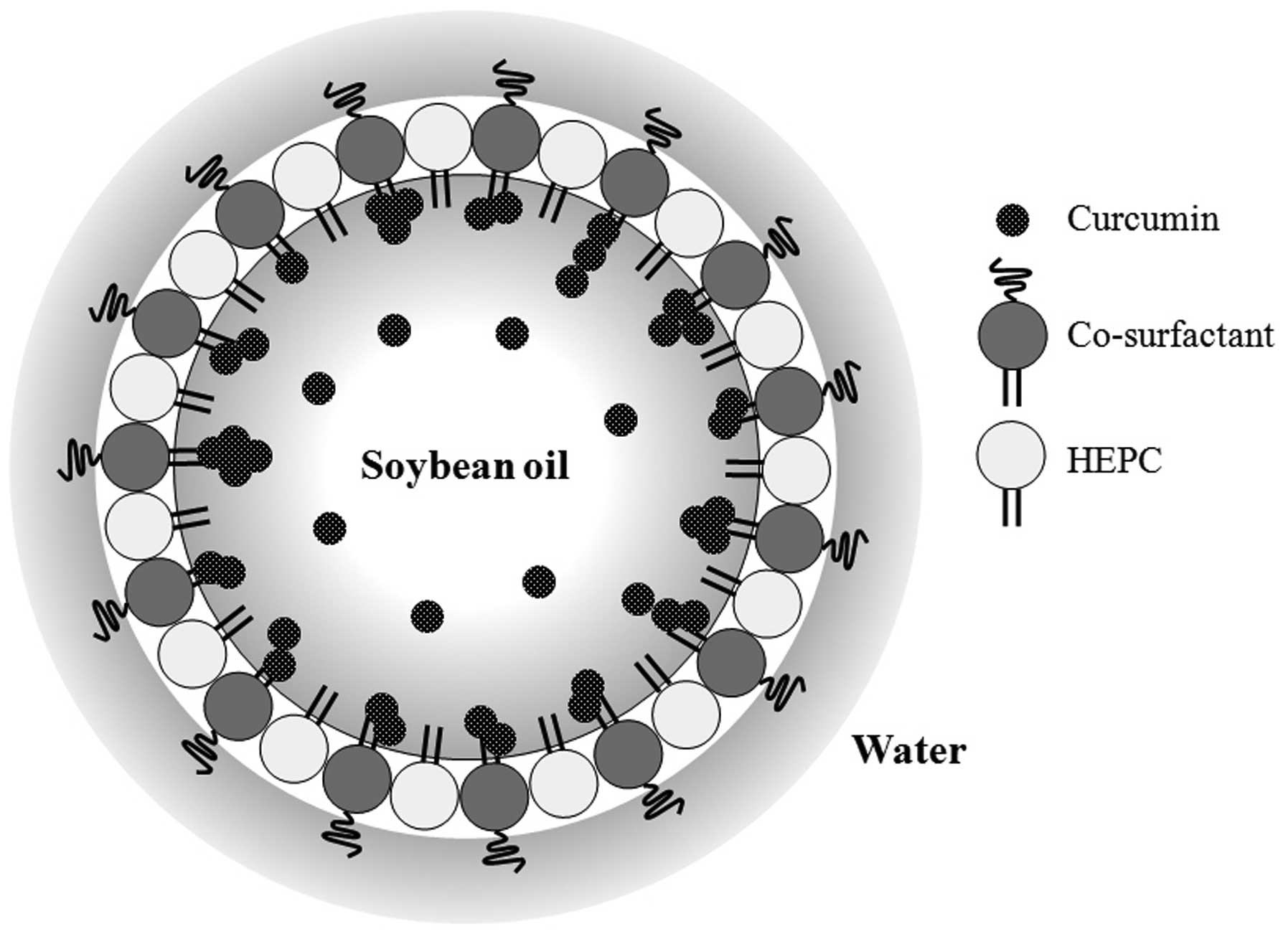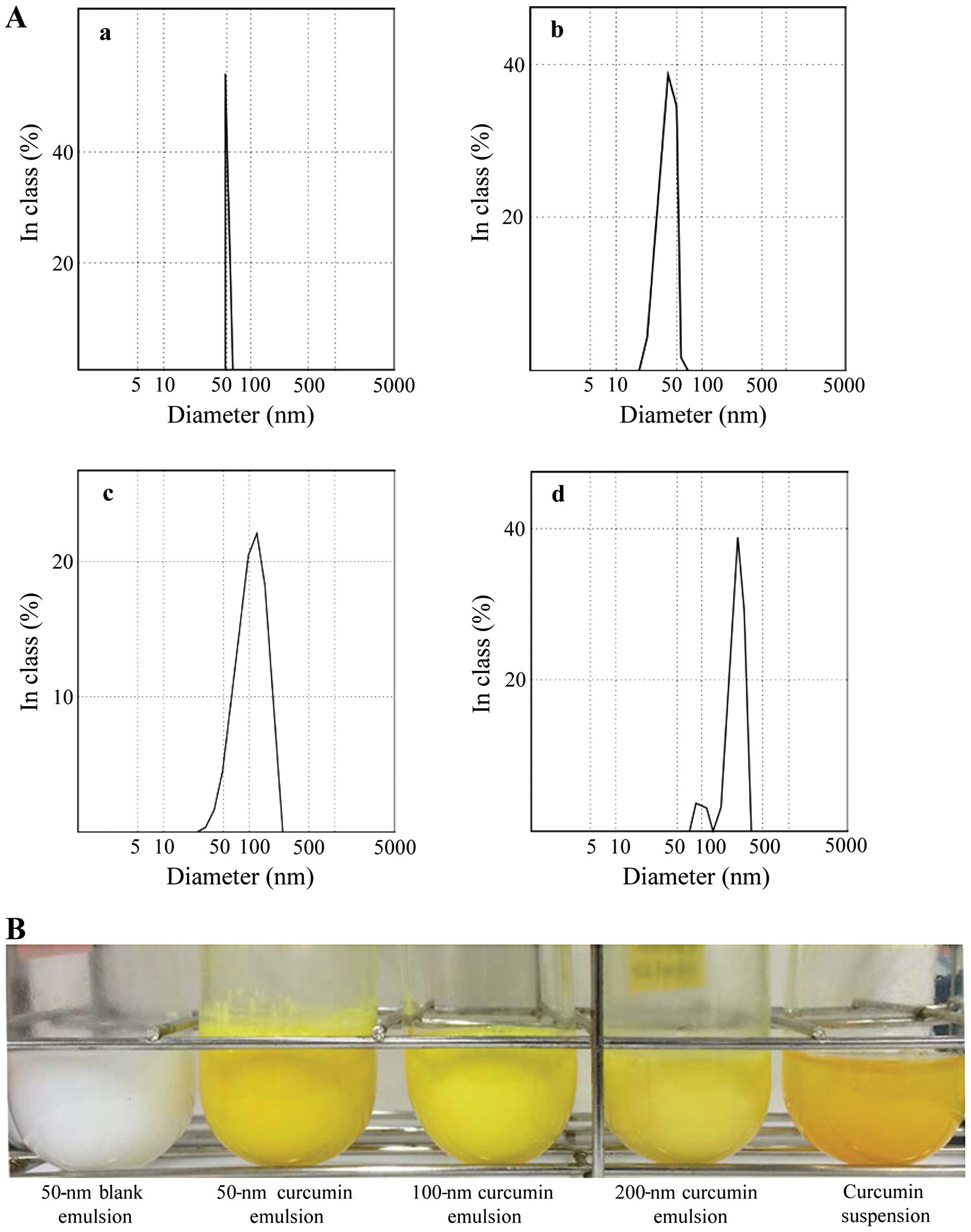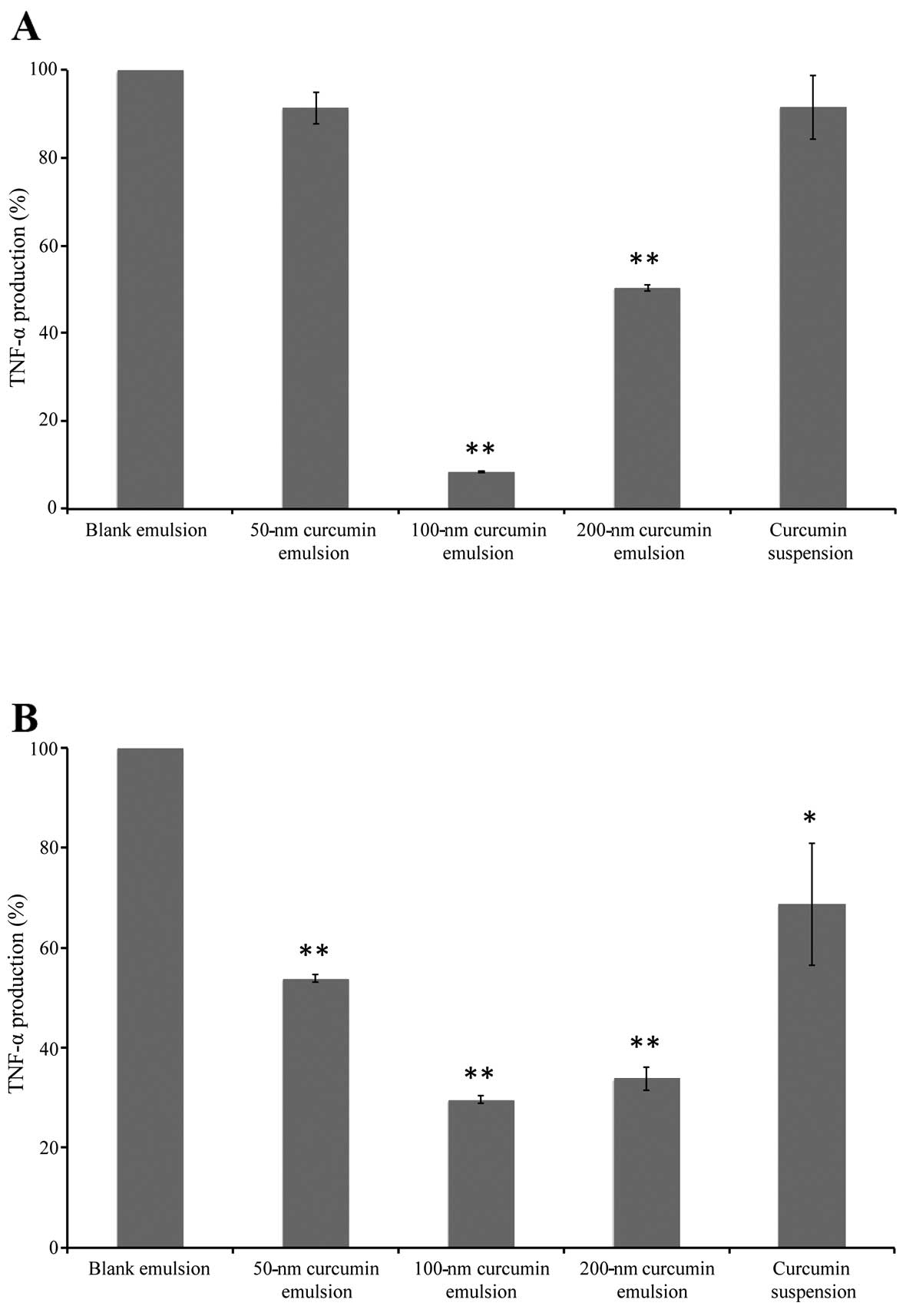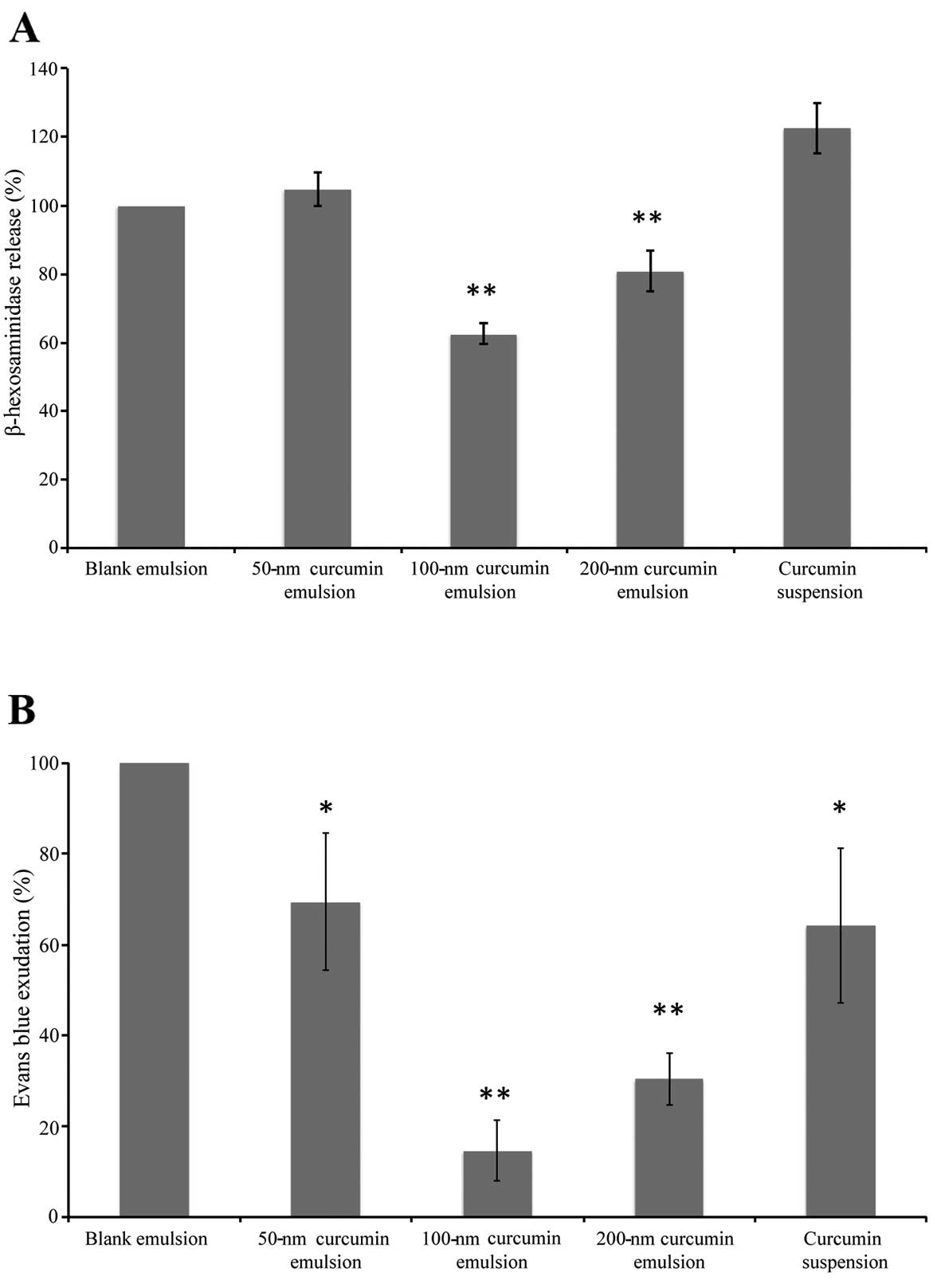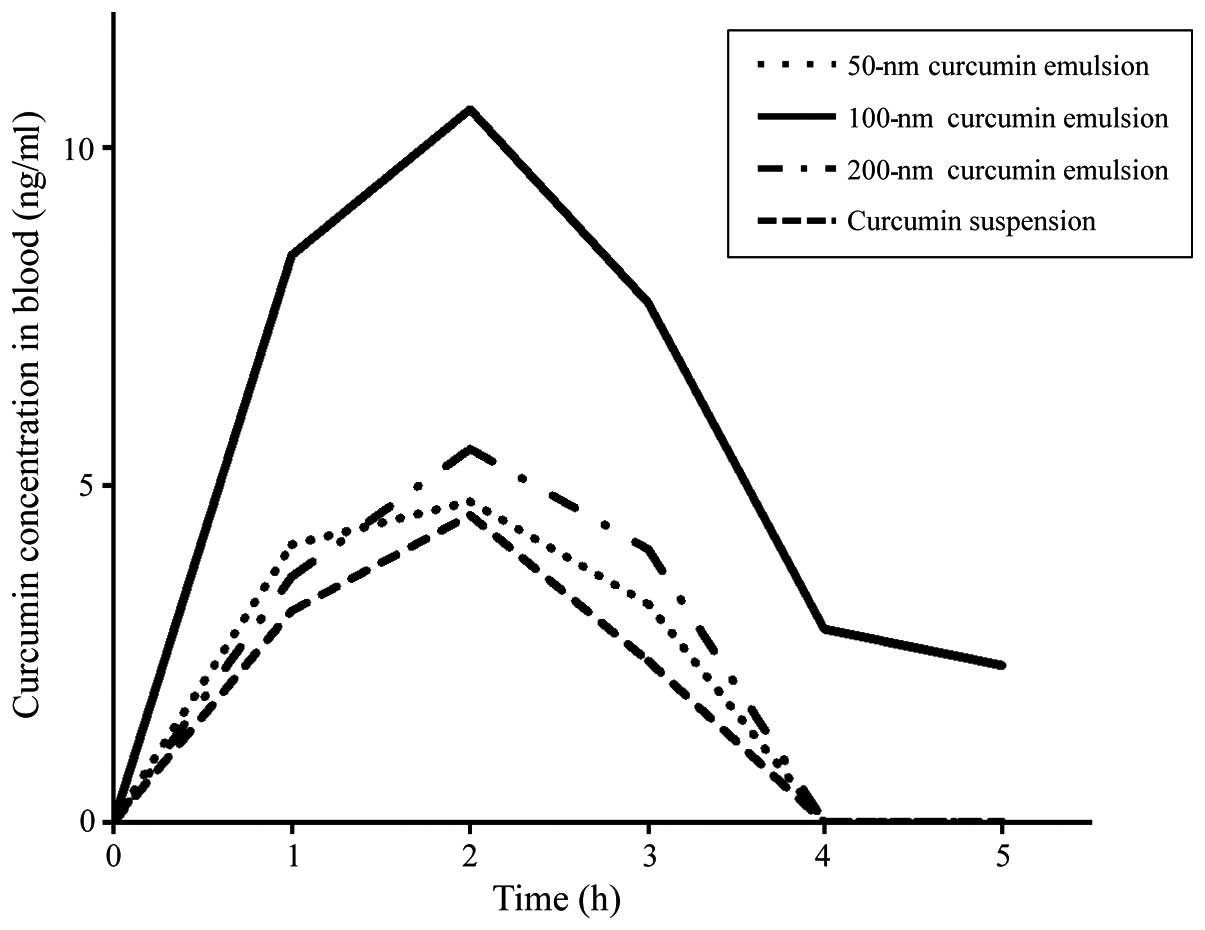|
1
|
Anand P, Kunnumakkara AB, Newman RA and
Aggarwal BB: Bioavailability of curcumin: Problems and promises.
Mol Pharm. 4:807–818. 2007. View Article : Google Scholar : PubMed/NCBI
|
|
2
|
Ammon HP, Safayhi H, Mack T and Sabieraj
J: Mechanism of antiinflammatory actions of curcumine and boswellic
acids. J Ethnopharmacol. 38:113–119. 1993. View Article : Google Scholar : PubMed/NCBI
|
|
3
|
Banerjee A and Nigam SS: Antimicrobial
efficacy of the essential oil of Curcuma longa. Indian J Med Res.
68:864–866. 1978.PubMed/NCBI
|
|
4
|
Bhavani Shankar TN and Sreenivasa Murthy
V: Effect of turmeric (Curcuma longa) fractions on the growth of
some intestinal and pathogenic bacteria in vitro. Indian J Exp
Biol. 17:1363–1366. 1979.PubMed/NCBI
|
|
5
|
Sawada T, Yamahara J, Shimazu S and Ohta
T: Evaluation of crude drugs by bioassay. III. Comparison with
local variation of contents and the fungistatic action of essential
oil from the root of Curcuma longa. Shoyakugaku Zasshi. 25:11–16.
1971.
|
|
6
|
Rao DS, Sekhara NC, Satyanarayana MN and
Srinivasan M: Effect of curcumin on serum and liver cholesterol
levels in the rat. J Nutr. 100:1307–1315. 1970.PubMed/NCBI
|
|
7
|
Limtrakul P, Anuchapreeda S, Lipigorngoson
S and Dunn FW: Inhibition of carcinogen induced c-Ha-ras and c-fos
proto-oncogenes expression by dietary curcumin. BMC Cancer. 1:1–7.
2001. View Article : Google Scholar : PubMed/NCBI
|
|
8
|
Anuchapreeda S, Limtrakul P,
Thanarattanakorn P, Sittipreechacharn S and Chanarat P: Inhibitory
effect of curcumin on WT1 gene expression in patient leukemic
cells. Arch Pharm Res. 29:80–87. 2006. View Article : Google Scholar : PubMed/NCBI
|
|
9
|
Anuchapreeda S, Thanarattanakorn P,
Sittipreechacharn S, Chanarat P and Limtrakul P: Curcumin inhibits
WT1 gene expression in human leukemic K562 cells. Acta Pharmacol
Sin. 27:360–366. 2006. View Article : Google Scholar : PubMed/NCBI
|
|
10
|
Anuchapreeda S, Tima S, Duangrat C and
Limtrakul P: Effect of pure curcumin, demethoxycurcumin, and
bisdemethoxycurcumin on WT1 gene expression in leukemic cell lines.
Cancer Chemother Pharmacol. 62:585–594. 2008. View Article : Google Scholar
|
|
11
|
Polasa K, Raghuram TC, Krishna TP and
Krishnaswamy K: Effect of turmeric on urinary mutagens in smokers.
Mutagenesis. 7:107–109. 1992. View Article : Google Scholar : PubMed/NCBI
|
|
12
|
Roy RG, Madesayaa NM, Ghosh RB,
Gopalakrishnan DV, Murthy NN, Dorairaj TJ and Sitaraman NL: Study
on inhalation therapy by an indigenous compound on P. vivax and P.
falciparum infections - a preliminary communication. Indian J Med
Res. 64:1451–1455. 1976.PubMed/NCBI
|
|
13
|
Azuine MA and Bhide SV: Chemopreventive
effect of turmeric against stomach and skin tumors induced by
chemical carcinogens in Swiss mice. Nutr Cancer. 17:77–83. 1992.
View Article : Google Scholar : PubMed/NCBI
|
|
14
|
Dorai T, Cao YC, Dorai B, Buttyan R and
Katz AE: Therapeutic potential of curcumin in human prostate
cancer. III. Curcumin inhibits proliferation, induces apoptosis,
and inhibits angiogenesis of LNCaP prostate cancer cells in vivo.
Prostate. 47:293–303. 2001. View Article : Google Scholar : PubMed/NCBI
|
|
15
|
Anuchapreeda S, Muangmoonchai R and
Limtrakul P: Effect of curcuminoids on MDR1 gene promoter activity
in human cervical carcinoma cells. Chiang Mai Med Bull. 41:189–202.
2002.
|
|
16
|
Mizushina Y, Hirota M, Murakami C, Ishidoh
T, Kamisuki S, Shimazaki N, Takemura M, Perpelescu M, Suzuki M,
Yoshida H, et al: Some anti-chronic inflammatory compounds are DNA
polymerase λ-specific inhibitors. Biochem Pharmacol. 66:1935–1944.
2003. View Article : Google Scholar : PubMed/NCBI
|
|
17
|
Takeuchi T, Ishidoh T, Iijima H, Kuriyama
I, Shimazaki N, Koiwai O, Kuramochi K, Kobayashi S, Sugawara F,
Sakaguchi K, et al: Structural relationship of curcumin derivatives
binding to the BRCT domain of human DNA polymerase λ. Genes Cells.
11:223–235. 2006. View Article : Google Scholar : PubMed/NCBI
|
|
18
|
Nishida M, Nishiumi S, Mizushina Y,
Fujishima Y, Yamamoto K, Masuda A, Mizuno S, Fujita T, Morita Y,
Kutsumi H, et al: Monoacetylcurcumin strongly regulates
inflammatory responses through inhibition of NF-κB activation. Int
J Mol Med. 25:761–767. 2010.PubMed/NCBI
|
|
19
|
Mizushina Y, Nishida M, Azuma T and
Yoshida M: Inhibition of DNA polymerase λ, a DNA repair enzyme, and
anti-inflammation: chemical knocked out analysis for DNA polymerase
λ using curcumin derivatives. DNA Repair and Human Health. Chapter
31. InTech. Vengrova S: pp. 777–792. 2011
|
|
20
|
Cheng AL, Hsu CH, Lin JK, Hsu MM, Ho YF,
Shen TS, Ko JY, Lin JT, Lin BR, Ming-Shiang W, et al: Phase I
clinical trial of curcumin, a chemopreventive agent, in patients
with high-risk or pre-malignant lesions. Anticancer Res.
21:2895–2900. 2001.PubMed/NCBI
|
|
21
|
Garcea G, Berry DP, Jones DJ, Singh R,
Dennison AR, Farmer PB, Sharma RA, Steward WP and Gescher AJ:
Consumption of the putative chemopreventive agent curcumin by
cancer patients: Assessment of curcumin levels in the colorectum
and their pharmacodynamic consequences. Cancer Epidemiol Biomarkers
Prev. 14:120–125. 2005.PubMed/NCBI
|
|
22
|
Kanai M, Yoshimura K, Asada M, Imaizumi A,
Suzuki C, Matsumoto S, Nishimura T, Mori Y, Masui T, Kawaguchi Y,
et al: A phase I/II study of gemcitabine-based chemotherapy plus
curcumin for patients with gemcitabine-resistant pancreatic cancer.
Cancer Chemother Pharmacol. 68:157–164. 2011. View Article : Google Scholar
|
|
23
|
Sharma RA, Euden SA, Platton SL, Cooke DN,
Shafayat A, Hewitt HR, Marczylo TH, Morgan B, Hemingway D, Plummer
SM, et al: Phase I clinical trial of oral curcumin: Biomarkers of
systemic activity and compliance. Clin Cancer Res. 10:6847–6854.
2004. View Article : Google Scholar : PubMed/NCBI
|
|
24
|
Vareed SK, Kakarala M, Ruffin MT, Crowell
JA, Normolle DP, Djuric Z and Brenner DE: Pharmacokinetics of
curcumin conjugate metabolites in healthy human subjects. Cancer
Epidemiol Biomarkers Prev. 17:1411–1417. 2008. View Article : Google Scholar : PubMed/NCBI
|
|
25
|
Porter CJ, Trevaskis NL and Charman WN:
Lipids and lipid-based formulations: Optimizing the oral delivery
of lipophilic drugs. Nat Rev Drug Discov. 6:231–248. 2007.
View Article : Google Scholar : PubMed/NCBI
|
|
26
|
Solans C, Izquierdo P, Nolla J, Azemar N
and Garcia-Celma MJ: Nanoemulsions. Curr Opin Colloid Interface
Sci. 10:102–110. 2005. View Article : Google Scholar
|
|
27
|
Wheeler JJ, Wong KF, Ansell SM, Masin D
and Bally MB: Polyethylene glycol modified phospholipids stabilize
emulsions prepared from triacylglycerol. J Pharm Sci. 83:1558–1564.
1994. View Article : Google Scholar : PubMed/NCBI
|
|
28
|
Liu F and Liu D: Long-circulating
emulsions (oil-in-water) as carriers for lipophilic drugs. Pharm
Res. 12:1060–1064. 1995. View Article : Google Scholar : PubMed/NCBI
|
|
29
|
Kurihara A, Shibayama Y, Mizota A, Yasuno
A, Ikeda M, Sasagawa K, Kobayashi T and Hisaoka M: Lipid emulsions
of palmitoylrhizoxin: Effects of composition on lipolysis and
biodistribution. Biopharm Drug Dispos. 17:331–342. 1996. View Article : Google Scholar : PubMed/NCBI
|
|
30
|
Wang Y, Mesfin GM, Rodríguez CA, Slatter
JG, Schuette MR, Cory AL and Higgins MJ: Venous irritation,
pharmacokinetics, and tissue distribution of tirilazad in rats
following intravenous administration of a novel supersaturated
submicron lipid emulsion. Pharm Res. 16:930–938. 1999. View Article : Google Scholar : PubMed/NCBI
|
|
31
|
Maranhão RC, Garicochea B, Silva EL,
Dorlhiac-Llacer P, Cadena SM, Coelho IJ, Meneghetti JC, Pileggi FJ
and Chamone DA: Plasma kinetics and biodistribution of a lipid
emulsion resembling low-density lipoprotein in patients with acute
leukemia. Cancer Res. 54:4660–4666. 1994.PubMed/NCBI
|
|
32
|
Miyamoto M, Hirano K, Ichikawa H, Fukumori
Y, Akine Y and Tokuuye K: Preparation of gadolinium-containing
emulsions stabilized with phosphatidylcholine-surfactant mixtures
for neutron-capture therapy. Chem Pharm Bull (Tokyo). 47:203–208.
1999. View Article : Google Scholar
|
|
33
|
Miyamoto M, Hirano K, Ichikawa H, Fukumori
Y, Akine Y and Tokuuye K: Biodistribution of gadolinium
incorporated in lipid emulsions intraperitoneally administered for
neutron-capture therapy with tumor-bearing hamsters. Biol Pharm
Bull. 22:1331–1340. 1999. View Article : Google Scholar
|
|
34
|
Razin E, Mencia-Huerta JM, Stevens RL,
Lewis RA, Liu FT, Corey E and Austen KF: IgE-mediated release of
leukotriene C4, chondroitin sulfate E proteoglycan,
β-hexosaminidase, and histamine from cultured bone marrow-derived
mouse mast cells. J Exp Med. 157:189–201. 1983. View Article : Google Scholar : PubMed/NCBI
|
|
35
|
Sato H, Kobayashi Y, Hattori A, Suzuki T,
Shigekawa M and Jippo T: Inhibitory effects of water-soluble
low-molecular-weight β-(1,3–1,6) D-glucan isolated from
Aureobasidium pullulans 1A1 strain black yeast on mast cell
degranulation and passive cutaneous anaphylaxis. Biosci Biotechnol
Biochem. 76:84–88. 2012. View Article : Google Scholar
|
|
36
|
Soler-Rodriguez AM, Zhang H, Lichenstein
HS, Qureshi N, Niesel DW, Crowe SE, Peterson JW and Klimpel GR:
Neutrophil activation by bacterial lipoprotein versus
lipopolysaccharide: differential requirements for serum and CD14. J
Immunol. 164:2674–2683. 2000. View Article : Google Scholar : PubMed/NCBI
|
|
37
|
Suzuki T, Hashimoto S, Toyoda N, Nagai S,
Yamazaki N, Dong HY, Sakai J, Yamashita T, Nukiwa T and Matsushima
K: Comprehensive gene expression profile of LPS-stimulated human
monocytes by SAGE. Blood. 96:2584–2591. 2000.PubMed/NCBI
|
|
38
|
Aggarwal BB: Signalling pathways of the
TNF superfamily: A double-edged sword. Nat Rev Immunol. 3:745–756.
2003. View Article : Google Scholar : PubMed/NCBI
|
|
39
|
Supajatura V, Ushio H, Nakao A, Akira S,
Okumura K, Chisei R and Ogawa H: Differential responses of mast
cell Toll-like receptors 2 and 4 in allergy and innate immunity. J
Clin Invest. 109:1351–1359. 2002. View Article : Google Scholar : PubMed/NCBI
|
|
40
|
Metcalfe DD, Peavy RD and Gilfillan AM:
Mechanisms of mast cell signaling in anaphylaxis. J Allergy Clin
Immunol. 124:639–646. 2009. View Article : Google Scholar : PubMed/NCBI
|
|
41
|
Payton F, Sandusky P and Alworth WL: NMR
study of the solution structure of curcumin. J Nat Prod.
70:143–146. 2007. View Article : Google Scholar : PubMed/NCBI
|
|
42
|
Li L, Braiteh FS and Kurzrock R:
Liposome-encapsulated curcumin: In vitro and in vivo effects on
proliferation, apoptosis, signaling, and angiogenesis. Cancer.
104:1322–1331. 2005. View Article : Google Scholar : PubMed/NCBI
|
|
43
|
Maiti K, Mukherjee K, Gantait A, Saha BP
and Mukherjee PK: Curcumin-phospholipid complex: Preparation,
therapeutic evaluation and pharmacokinetic study in rats. Int J
Pharm. 330:155–163. 2007. View Article : Google Scholar
|
|
44
|
Mizushina Y, Maeda N, Kawasaki M, Ichikawa
H, Murakami C, Takemura M, Xu X, Sugawara F, Fukumori Y, Yoshida H,
et al: Inhibitory action of emulsified sulfoquinovosyl acylglycerol
on mammalian DNA polymerases. Lipids. 38:1065–1074. 2003.
View Article : Google Scholar : PubMed/NCBI
|
|
45
|
Anuchapreeda S, Fukumori Y, Okonogi S and
Ichikawa H: Preparation of lipid nanoemulsions incorporating
curcumin for cancer therapy. J Nanotechnol Article.
2012:2703832012.
|
|
46
|
Hung CF, Hwang TL, Chang CC and Fang JY:
Physicochemical characterization and gene transfection efficiency
of lipid emulsions with various co-emulsifiers. Int J Pharm.
289:197–208. 2005. View Article : Google Scholar : PubMed/NCBI
|
|
47
|
Chinsriwongkul A, Opanasopit P,
Ngawhirunpat T, Chareansriwilaiwat N, Sila-On W and Ruktanonchai U:
Physicochemical properties of lipid emulsions formulated with
high-load all-trans-retinoic acid. PDA J Pharm Sci Technol.
61:461–471. 2007.
|
|
48
|
Texier I, Goutayer M, Da Silva A, Guyon L
and Djaker N: Cyanine-loaded lipid nanoparticles for improved in
vivo fluorescence imaging. J Biomed Opt. 14:0540052009. View Article : Google Scholar : PubMed/NCBI
|
|
49
|
Goutayer M, Dufort S, Josserand V, Royere
A, Heinrich E, Vinet F, Bibette J, Coll JL and Texier I: Tumor
targeting of functionalized lipid nanoparticles: assessment by in
vivo fluorescence imaging. Eur J Pharm Biopharm. 75:137–147. 2010.
View Article : Google Scholar : PubMed/NCBI
|
|
50
|
Hurstand WJ and Martin RA Jr: The analysis
of phospholipids in soy lecithin by HPLC. J Am Oil Chem Soc.
61:1462–1463. 1984. View Article : Google Scholar
|
|
51
|
Sonneville-Aubrun O, Simonnet JT and
L’Alloret F: Nanoemulsions: A new vehicle for skincare products.
Adv Colloid Interface Sci. 108–109:145–149. 2004. View Article : Google Scholar
|
|
52
|
Patel D and Sawant KK: Oral
bioavailability enhancement of acyclovir by self-microemulsifying
drug delivery systems (SMEDDS). Drug Dev Ind Pharm. 33:1318–1326.
2007. View Article : Google Scholar : PubMed/NCBI
|















